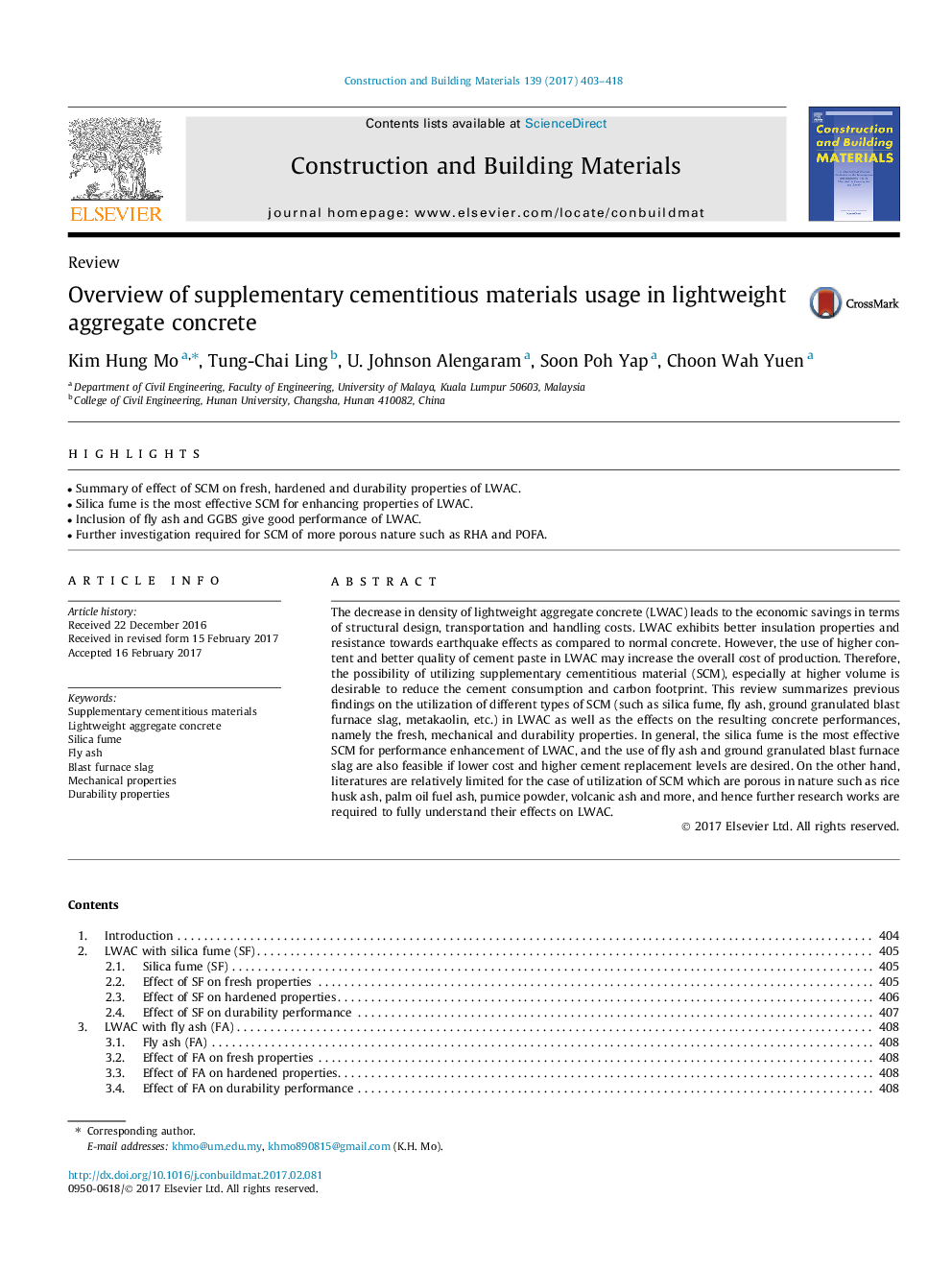| Article ID | Journal | Published Year | Pages | File Type |
|---|---|---|---|---|
| 4913474 | Construction and Building Materials | 2017 | 16 Pages |
Abstract
The decrease in density of lightweight aggregate concrete (LWAC) leads to the economic savings in terms of structural design, transportation and handling costs. LWAC exhibits better insulation properties and resistance towards earthquake effects as compared to normal concrete. However, the use of higher content and better quality of cement paste in LWAC may increase the overall cost of production. Therefore, the possibility of utilizing supplementary cementitious material (SCM), especially at higher volume is desirable to reduce the cement consumption and carbon footprint. This review summarizes previous findings on the utilization of different types of SCM (such as silica fume, fly ash, ground granulated blast furnace slag, metakaolin, etc.) in LWAC as well as the effects on the resulting concrete performances, namely the fresh, mechanical and durability properties. In general, the silica fume is the most effective SCM for performance enhancement of LWAC, and the use of fly ash and ground granulated blast furnace slag are also feasible if lower cost and higher cement replacement levels are desired. On the other hand, literatures are relatively limited for the case of utilization of SCM which are porous in nature such as rice husk ash, palm oil fuel ash, pumice powder, volcanic ash and more, and hence further research works are required to fully understand their effects on LWAC.
Keywords
Related Topics
Physical Sciences and Engineering
Engineering
Civil and Structural Engineering
Authors
Kim Hung Mo, Tung-Chai Ling, U. Johnson Alengaram, Soon Poh Yap, Choon Wah Yuen,
